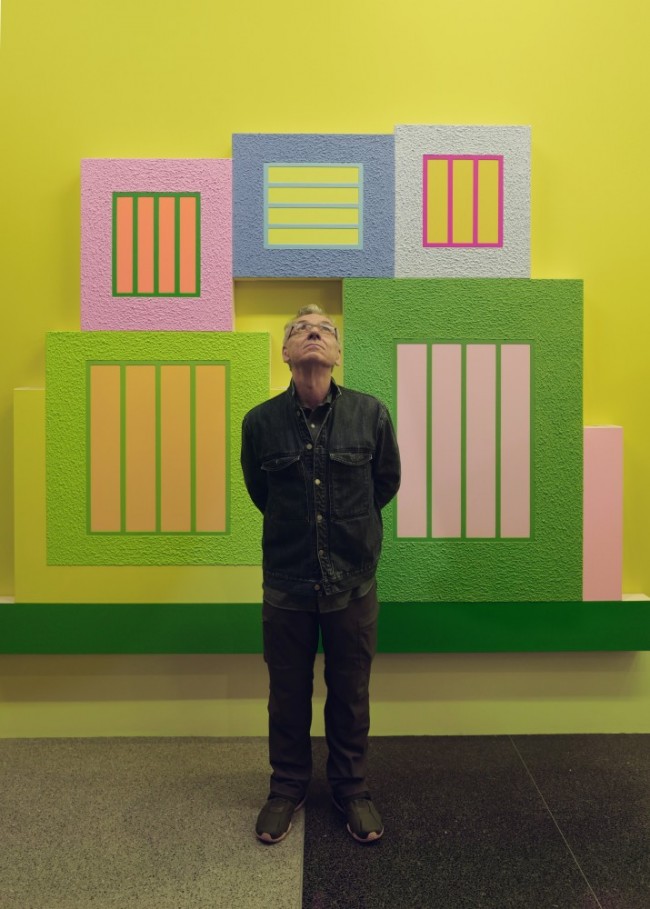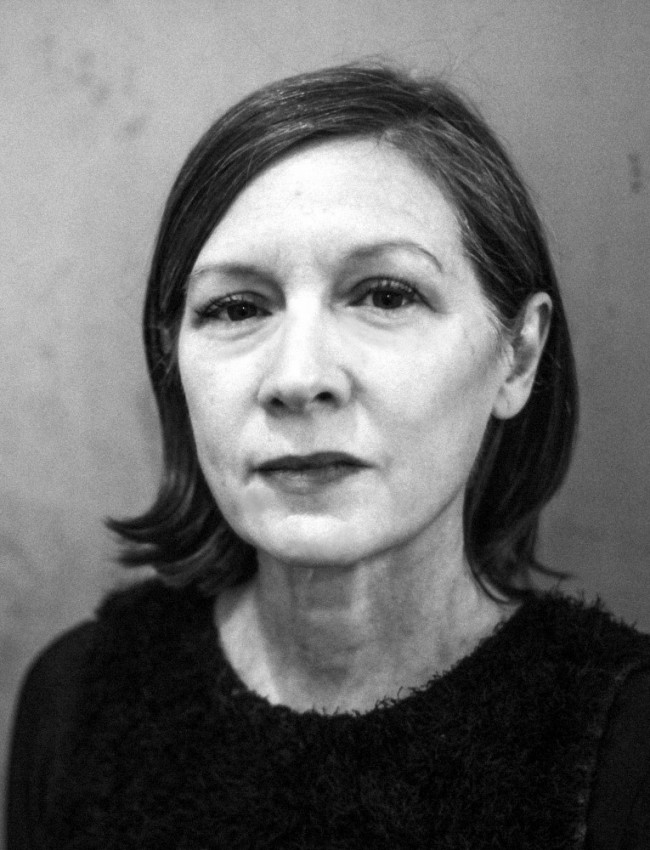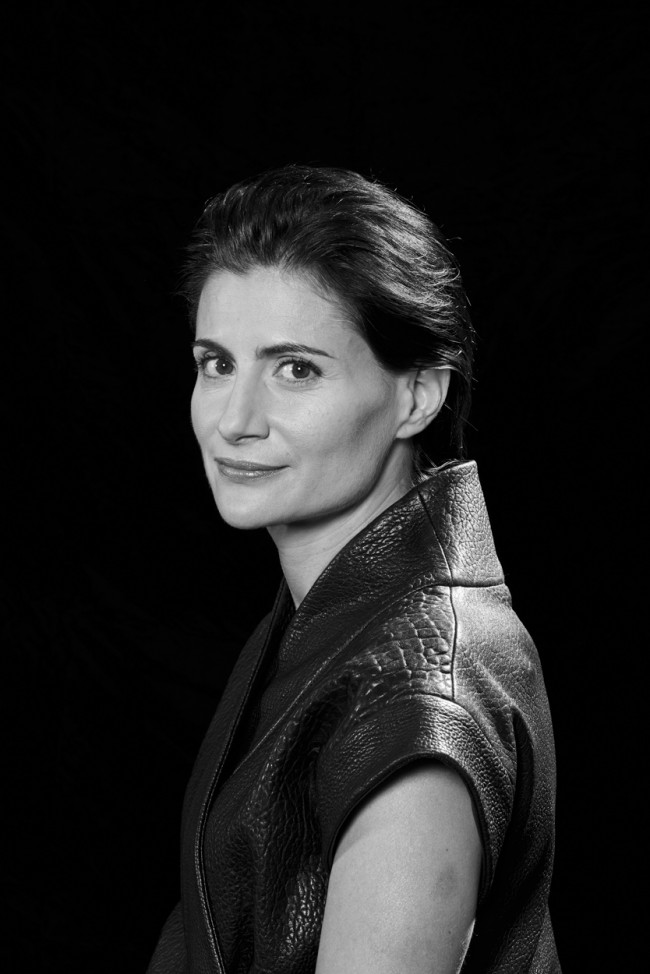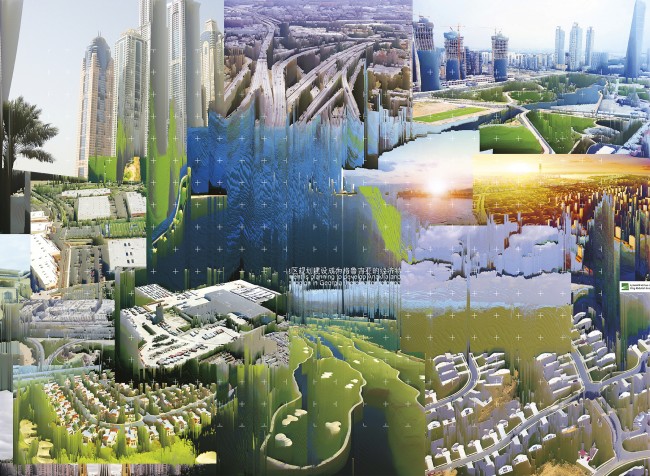CLOUD FORMATIONS: Climate Change, Diaspora Theory, and the Internet

Matthew Raviotta, Wet Protest Series (2017): "Where environmentalists once led the protests, today we see a broader base of support."
On Sunday, September 21, 2014, two days before world leaders met at the United Nations for an emergency climate summit, more than 400,000 people gathered in New York City for the People’s Climate March. Together they moved through Central Park West like a colossal cloud. Advancing past the Museum of Natural History, flowing around Columbus Circle, and funneling through Times Square, the group would stop at different locations, sometimes standing for a moment of silence to remember the victims of climate change, sometimes to sound a “climate burglar alarm” — a collective warning against the fossil-fuel industry and politicians who were intent, as the protesters saw it, “on stealing our future.” The march was convened by a coalition of organizations and was intended to bring together a community concerned with the impact of anthropogenic climate change. Beyond its sheer size, the most distinguishing aspect of this community was its diversity of purpose. Since the green movement emerged in the 1970s, protests have shifted focus: from the environment to the climate, from the immediate to the totalizing, from the ethics of saving to the ethics of protecting. Where environmentalists once led the protests, today we see a broader base of support. Indigenous leaders and social-justice organizers now join in leading the protest. Forming the nebulous cadre of marchers was a heterogeneous admixture of environmental-justice groups, labor unions, and migrant communities; delegations from the world’s island nations mingled with local-interest groups; Buddhist, Taoist, Christian, Jewish, and Islamic religious leaders demonstrated with their attendant congregations; students and academics walked with film celebrities. In great numbers were advocates of the Voting Rights Act, the Hip-Hop Caucus (a civil- and human-rights organization), and those demanding justice for Michael Brown.

Matthew Raviotta, Wet Protest Series (2017): "Rising ocean levels will displace up to 1.3 billion people, or 21 percent of the world's population."
It is easy to dismiss these groups for exploiting the Climate March and its media visibility as a vehicle to further their own agendas, but in recent years large protest movements unifying disparate concerns have manifested around the world with increasing frequency — take, for example, the so-called Arab Spring, the Occupy movement, or more recently the Women’s March on Washington. Compared to protests convened for a singular cause that aim to give physical form to solidarity around that cause, uprisings that encompass disparate ontological frameworks challenge dissenters and observers to articulate how the group’s multiple purposes, identities, subjectivities, and ideologies lockstep. Some have rightly observed that movements like Occupy are symptomatic of globalization and have offered that its processes of material extension not only organize our world through the standardization and amplification of production, trade, communication, and inquiry but also the subjective encounter associated with that spread. Processes like globalization and climate change that, on the one hand, mark out spaces and temporalities beyond human observation can, on the other, be made tangible and be experienced. To that effect, rising ocean levels will displace up to 1.3 billion people, or 21 percent of the world’s population, in the next century, which will confront nation states with unintended and ruinous weather events more powerful than any legislation. If ideology is a seafaring traveler, then ontologies of being — of how we live temporally and spatially — are the ocean, and our imaginary the guiding stars. Configured as such, in order to grasp the reasons for new, internally diverse, social formations of protest from Occupy to the Climate March, we must take stock of how and what we imagine community to be in today’s globalized societies.

Matthew Raviotta, Wet Protest Series (2017): "If ideology is a seafaring traveller, then ontologies of being are the ocean, and our imaginary the guiding."
A radical restructuring of community demands a reconception of the architecture it produces and inhabits. For the past two decades, architectural practices have reacted to environmental concerns with the material solutions of “green architecture.” But accounts of green architecture’s failures, from its ethics of deferral through pollution offsetting, to its post-construction failures, are many, and they are often positions that ultimately defer or blanket the effects of one of the world’s most polluting industries rather than offering any practice-wide change. As such, sustainability through green-architecture certification can often lead to its opposite. Perhaps a fresh methodological approach is called for. Climate — the prevailing weather trends of a large area over a long period of time — is measured through the accumulation of semi-empirical parameters from many sources, often from different countries, with diverse methods of assessment. Global datasets are derived from simulations, constrained by instrument observations. These simulations are “reanalyzed” as technology improves. In this way, climatology is a science fundamentally driven by the use and study of modeling, much like architecture. In both disciplines, models give shape to the yet unformed, and climate specifically is known only through modeling. For both architecture and climate, data and material for modeling aren’t collected — they are made. Models simulate future conditions, and in both architecture and climate science, they allow the material objects at the core of each discipline — buildings and weather over time — to enter into discourse before and without physical manifestation. Through his analysis of Leon Battista Alberti’s writing, architectural historian Mario Carpo has argued that drawings of buildings and the building itself can be seen as “perfectly identical,” if the architectural practice is viewed as autographic — made by the author — rather than allographic, denoted by the author but executed by someone else. “In Alberti’s theory,” the radicality of which is by now fully intuited by architects, “the design of a building is the original, and the building is its copy,” Carpo writes in The Alphabet and the Algorithm (MIT Press, 2011). To the degree that modeling provides an epistemological affinity between architecture and climate science, can architecture help make the urgencies of the environment as immediate as an architectural plan? To what degree is “taking climate action” also an act of architecture? Can climate change produce a new method for architecture?

Matthew Raviotta, Wet Protest Series (2017): "If communities are not bounded by borders, how are they organized - and condensed - in space?"
In Imagined Communities: Reflections on the Origin and Spread of Nationalism (Verso, 1983), Benedict Anderson points to print media as a technology that has allowed people from far-flung locations to identify themselves as a collective citizenry. Fully mechanized, and achievable at low costs, printing allowed the novel and the newspaper to flourish in Europe in the 18th century and “provided the technical means for ‘re-presenting’ the kind of imagined community that is the nation.” With characters unknown to each other, and parallel storylines taking place, novels and newspapers evoke both a sphere of events in a discrete space (society), as well as an omniscient observer (the reader) for whom the various events unfold. Through media, a world greater than one’s immediate surroundings can be imagined. As Anderson has argued, these narrative forms helped give rise to the imagined bonds that make the nation state: a collective sentiment that manifests physically as borders and territory, government and laws, language, religion, and citizenship. Anderson published the first edition of Imagined Communities well before the end of the Cold War — when national identity was code for ideological belonging — and just before the invention of communication technologies like mobile telephony and a decade before the advent of Internet-based tools like e-mail and mobile computing. Though the nation state still has a strong role in contemporary self-identification, beginning in the 1960s — with concurrent growth in migration and in communication technologies — the state found increasing resistance to its ideological, economic, discursive, and even political dominance from nongovernmental groups. For populations in flux, the nation was no longer descriptive of all the people it harbored. In the postwar imagination of social citizenship, migrant groups became agents of destabilization rather than cosmopolitan citizens. As a result, as diaspora scholar Khachig Tölölyan sees it in his 1996 essay Rethinking Diaspora(s), “the nation’s aspiration to normative homogeneity is challenged not just by immigration but also by various forms of cultural practices and knowledge production,” with transnational movements of capital, labor, ideas, and information dissolving the state’s long-held hegemony. It’s a trend against which the current resurgence of nationalist tendencies in the United Kingdom, Austria, Hungary, France, and the U.S., to name but a few, are a reaction, but which they ultimately are unlikely to be able to stop. If identities fracture further into multiple registers, what, then, draws us into communities? If communities are not bounded by borders, how are they organized — and condensed — in space? As a response to the contemporary dispersion of communities challenged by oppressive regimes, or changing climate, architectural solutions like border walls appear all the more senseless, no matter how much short-term political gain can be extracted from promises to build them. In fact, in her book Walled States, Waning Sovereignty (Zone Books, 2010), political scientist Wendy Brown emphasized that 21st-century border walls are no longer built to separate nation states, as in previous centuries, but to control the movement of non-state transnational actors.
The question of figuration — which is to say, the question opening this essay, and the question that evaded Anderson’s imagined nationhood — is underscored by contemporary diaspora studies. Led by scholars such as Tölölyan, Avtar Brah, and James Clifford, theories of diaspora acknowledge the unfixed nature of identity. Identity derives from where one grew up, where one resides, and the multiplicity of cultures that compose these places. Diaspora studies — a field which attempts to distill and define social conditions of travel, plurality, provisionality, and instability, and which is organized within porous spheres of identity — both accept and warn against the slippages between diaspora as a theoretical concept, as a set of discourses, and as an account of distinct, subjective experiences.

Matthew Raviotta, Wet Protest Series (2017): "A heterogeneous admixture of environmental-justice groups, labor unions, and migrant communities."
In Cartographies of Diaspora (Routledge, 1996), Avtar Brah proposes a frame of analysis: diaspora space. Surfaceless and of shifting dimensions, diaspora space situates diaspora, borders, and the politics of location in orbit-like motion. For Brah, diaspora is understood not just as peoples dispersed from their place of origin but rather the relationality between diasporic forms — forms that could be given to architectural diagramming. The conditions that prompt a group to leave, and those that frame how they arrive, are important to understanding the concept of diaspora. In this sense, Brah sees the populations from which a group splintered, and those which a group joins, as belonging to the same diasporic community. It is the “economic, political, and cultural specificities linking these components (groups) that the concept of diaspora signifies.” As such, diasporic communities are an amalgamation of the various journeys taken, combined into a confluence of narratives that imaginatively defines the community. The concept of borders — the arbitrary divisions between cultures, societies, and territories — is embedded within the concept of diaspora. As an abstraction of differences, borders serve to separate populations and territory, producing a politics of location, a polity of space. In diaspora space, location is not a fixed referent but defined almost apophatically — in the negative — as dislocation, or displacement. If it is indexical of anything, it is contradiction. It is “a positionality of dispersal; of simultaneous situatedness within gendered spaces of class, racism, ethnicity, sexuality, age; of movement across shifting cultural, religious, and linguistic boundaries; of journeys across geographical and psychic borders.” The architecture envisioned for this space is one that privileges forms of movement and dispersal, destabilizing the regime of solidity and permanence.
Where narratives of the nation state feature originary absolutes, ethnic primacy, ideological cohesion, and territorial imperatives, diaspora space addresses spatial transience and multivalent, creolized, contradicting ideologies as equally valid and concurrent modes of being in the contemporary world. It recognizes that a native-born citizen is also an immigrant, a feminist can very well be racist, a gay-rights activist may be a polluter, an organic farmer a human-rights violator, and that all these identities, nevertheless, may imagine themselves as a community. Diaspora space, which spatially accommodates the diversity rather than unity of communal experience, manifestly dissolves state narratives, proposing instead the dimensions for a space of conviviality. But dissolution of the state’s authority does not mean that contemporary global populations are unburdened by higher authority. “Extrastatecraft,” a term coined by Keller Easterling in the book of the same name (Extrastatecraft: The Power of Infrastructure Space (Verso, 2014)), is the dynamic matrix of space, information, and power that generates self-arbitrated forms of polity outside of, in addition to, and sometimes in partnership with, the state. The many nongovernmental infrastructures generated by diasporic forms themselves produce a regulatory effect. Remittance is a case in point. In 2011, migrants sent approximately three times more to developing countries than these countries received in official aid; this is an amount equal to about half of foreign direct investment in the same countries. Universal standards as imposed by nongovernmental organizations like the International Organization for Standardization (ISO) regulate the distance between train tracks, the turning radii of roads, the thickness of credit cards, codes that let cellphones from different manufacturers communicate with one another, and Internet protocols that allow data to pass from server to server across the globe.

Matthew Raviotta, Wet Protest Series (2017): "Within corporate and state control while simultaneously unavailable as agents for these power structures."
Since the communities, values, and power gathered around the nation state have been dissipating and replaced since the 1960s, are there alternate topologies through which global diaspora can imagine a space of belonging? Furthering Anderson’s theory that new technologies of communication foster new forms of belonging, we might consider the broadcasting tools of the World Wide Web as generative of other communities. In the 1970s, the early days of the development of computer networks, a goal shared by many of the movement’s leaders was expressly to create communities of shared interests. Whether it be the military developers of the Advanced Research Projects Agency Network (ARPANET) allowing smaller computers around the U.S. to share capacity (1969); the students from Duke University and the University of North Carolina who established Usenet (1979); the scientists and researchers behind the Computer Science Network (CSNET, 1982) and National Science Foundation Network (NSFNET, 1983); Robert Kahn and Vinton Cerf, who reworked ARPANET’s protocol to one that would be adopted by almost all other networks, creating the Internet (1983); or Tim Berners-Lee, who in 1989 created the World Wide Web, the browser software for navigating the Internet; the aim has always been to establish a way to share information through message services, cooperative devices, and collective documents.

Matthew Raviotta, Wet Protest Series (2017): "People are developing communities defined more by common interest than by accident of geography."
Until around 1993, the Internet was the domain of scientists and academics. The imagined community, its dream of instantaneous access to knowledge and connectivity with others, was limited to an intellectual elite. But at this moment, when the popular press began to expound on the social and political potentials of the “new virtual community” that would replace traditional public spaces, what Patrice Flichy calls the cyber-imaginaire started to take shape (Flichy, The Internet Imaginaire (MIT Press, 2007)). Structurally descended from academic computer networks, culturally impelled by the promise of a digital revolution, and manifested through user manuals, enthusiasts’ magazines, and television coverage, as well as a growing number of mass-market online-access providers like AOL, the Internet became as much a new mode of communication as it did a self-fulfilling myth of universal access to free information — if self-fulfilling only in the minds of its adherents. As noted by Flichy, the forward to one of the early manuals, the Big Dummy’s Guide to the Internet (an online publication, first published in 1993), by co-founder of the Electronic Frontier Foundation, Mitchell Kapor, is an invitation to enter a new society:
New communities are being built today. You cannot see them, except on a computer screen. You cannot visit them, except through your keyboard. Their highways are wires and optical fibers; their language a series of ones and zeroes. Yet these communities of cyberspace are as real and vibrant as any you could find on a globe or in an atlas. Those are real people on the other sides of those monitors. And freed from physical limitations, these people are developing new types of cohesive and effective communities — ones which are defined more by common interest and purpose than by an accident of geography, ones on which what really counts is what you say and think and feel, not how you look or talk or how old you are. The oldest of these communities is that of the scientists, which actually predates computers. Scientists have long seen themselves as an international community, where ideas were more important than national origin. It is not surprising that the scientists were the first to adopt the new electronic media as their principal means of day-to-day communication. I look forward to a day in which everybody, not just scientists, can enjoy similar benefits of a global community. But how exactly does community grow out of a computer network? It does so because the network enables new forms of communication.
As with novels and newspapers, the community that emerged from the Internet is also based on communication. The key difference here is that individuals are not only readers but also producers of text, often the texts they themselves want to consume. “Cohesive and effective communities” are made not through an “accident of geography,” but like scientists, by “common interest and purpose.” “Ideas are more important than national origin,” and in this sense, the imagined community of the Internet is a self-generating diaspora space, its members having emigrated from the physical realm to arrive at the virtual one. For computer researcher Marc Prensky, there were no natives of the digital realm until after 1980 (as postulated in his 2001 essay Digital Natives, Digital Immigrants). On the Internet, the self was of one’s own making. One’s online activity on forums, bulletin board systems (BBS), chat rooms, and more recent social-media platforms like Facebook, constitute a sociality; what we do, and how we do it manifests into a new and distinct persona, unattached to its physical, real-world referent. Manuel Castells, in Networks of Outrage and Hope (Polity Press, 2012), termed online correspondence “mass self-communication,” foregrounding the potential mass reach of digital messages as well as the autonomy of the individual publisher. In A Prehistory of the Cloud (MIT Press, 2015), Tung-Hui Hu reminds us that to be online, to be in the cloud, is partially to submit to the neoliberal structures that created the Net in the first place and maintain it today. Not unlike Zuccotti Park, where Occupy Wall Street assembled, “what gathering spaces emerge within the cloud are closest to the ambiguously named privately owned public open spaces found in an American city’s financial district. Though the landscaping of these pocket parks and rooftop gardens bears a superficial resemblance to public space, these overly tidy zones are nevertheless administered by banks, insurance companies, and the like.” But unlike mainstream media outlets, digital communication in the early 21st century has the potential to offer a new type of ideological independence, one that is couched within the strictures of corporate and state control while simultaneously unavailable as agents for the propagation of these power structures. Operationally, the nation state has little to do with the communities imagined on the Internet. Until control is wielded over the totality of online and offline activity by a single power, moving from one realm to another disables the full articulation of a community objectively, its cohesion, like that between the constituents of the Climate March, legible only internally, evading complete authority.

Matthew Raviotta, Wet Protest Series (2017): "Nature is undemocratic. Voting and inclusion cannot change how the climate operates."
Much study has been made of social movements and protest groups, but few contend with the dynamic nature of their contemporary, post-Internet makeup, reverting instead to understanding them through Marxist power structures. In this vein, Castells calls groups like those of the Climate March and the Occupy demonstrations networked social movements. These movements began on the Internet. Broadly, networked social movements begin when voices online respond to perceived offline injustices, and if the cause finds substantial purchase, it then migrates to public urban space. In urban space, at symbolic places controlled by the dominant elite, network society’s collective concerns are performed both to strengthen the ties within the group and to display their solidarity of concern to other publics. For Castells, this moment of physical togetherness is fundamental to controlling the fear that comes with resistance while demonstrating to others that they will be among many if they decide to join the group. As explained in Communication Power (OUP, 2009), Castells’s formulation is based on the unequal distribution of power, allowing powerful social actors to influence others, bending them to their will, interests, and values. Power is wrought from four processes: the enacting in, and making, instating, and combining of, social networks. Though this applies well to traditional defiance against hegemonic powers like governments and corporations, the significance given to the possession of power relies on a hegemonic interest in it, concealing other processes that differentiate the vast communities of social actors in question. Recounting the multitude of interests motivated to march down Manhattan on September 21, 2014, a cloud moving across a grid — spatially transient, multivalent, creolized, and held by internal contradictions — it becomes apparent that theories of diaspora are much more analytically adept at viewing the social and political dynamics of such populations than the well-rehearsed narratives of power distribution. Just as Hubert Damisch has shown that clouds in early modern landscape painting were used to mask perspectival contradictions, bearing them out in the process, reimagining community’s shapelessness could sharpen our image of its underlying structures. “In ever changing cloud formations,” writes Damisch, “people see what they wish to see: configurations of their desires, images from their theater of life, signs of their culture.” (A Theory of /Cloud/: Toward a History of Painting (Stanford University Press, 2002).)

Matthew Raviotta, Wet Protest Series (2017): "Providing an epistemological affinity between architecture and the study of climate change."
Like cellphone reception, clouds are ubiquitous but unevenly distributed throughout the sky, and if they are to contribute to a reimagining of community, their unequal mediation of sun, rain, and shade, say, must be accounted for. We must learn how to read clouds. Less than three weeks after the People’s Climate March, sociologist Richard Sennett wrote an editorial in The Guardian about “why climate change should signal the end of the city-state.” In it, he mentions Max Weber, Franz Fanon, and Henri Lefebvre and validates the historic need for city-based conceptions of community and governance. If cities were populated by citizens who felt accounted for and engaged them through inclusive democratic processes, then they would function, and thrive, as autonomous systems. For Sennett, global warming changed this assumption. After the devastation of Hurricane Sandy in 2012, many of the coastal mid-Atlantic settlements in the United States were supported with huge federal grants to rebuild damaged houses and to construct storm barriers to protect against future weather events. As climate change affects the entire planet, Sennett challenges the Weberian values that maintain legislative sovereignty and calls for us to imagine a global network of cities running in tandem. “Adapting to climate change, in other words, means that coherence of the city’s form will alter, due to forces outside human control. Nature is undemocratic. Voting and inclusion cannot change the facts on the ground about how the climate operates.” Sennett draws on the incompatibility between civil law and natural law and suggests that the unpredictability and contingency of nature should inform the continued evolution of the city. “We must meet the uncertainty of a physically unsettled world by thinking of the city as itself a more unstable place.” In other words, social movements, like climate awareness, must be imagined together with the physical movement of society’s members.

Matthew Raviotta, Wet Protest Series (2017): "To what degree can climate change produce a new method for architecture?"
Cities are geographically specific entities. Indeed, as sea levels rise and storm surges alter how planners and designers approach cities — determining where people might live and how infrastructure is built — climate change is also transforming our social makeup. How we occupy streets, congregate publicly, and communicate collectively generates new spatial prerogatives that will further determine how communities become manifest. Construed in this way, climate change and its social effects call for a new method in architecture beyond the material responses of offsetting and deferral of liability promoted by green architecture. Sennett imagines a system of legislatively interconnected nodes that, while disparate in their specificity, operate as a unified interest group, collectively supporting the viability of the planet’s climate system to support human life. Before this is ever achieved — and current political developments in the U.S. make this goal seem evanescent — diasporic communities like that which gathered for the climate march, multitudinous in its internal diversity but moving forward as one, serve well as a model to proceed.
Text by Carson Chan.
Artwork by Matthew Raviotta.
Taken from PIN–UP No. 22, Spring Summer 2017.
Carson Chan is an architecture curator and critic. He is currently pursuing a Ph.D. on aquarium architecture at Princeton University School of Architecture. A version of this essay was first published in Climates: Architecture and the Planetary Imaginary (Columbia Books on Architecture and the City, Lars Müller Publishers, 2016).














